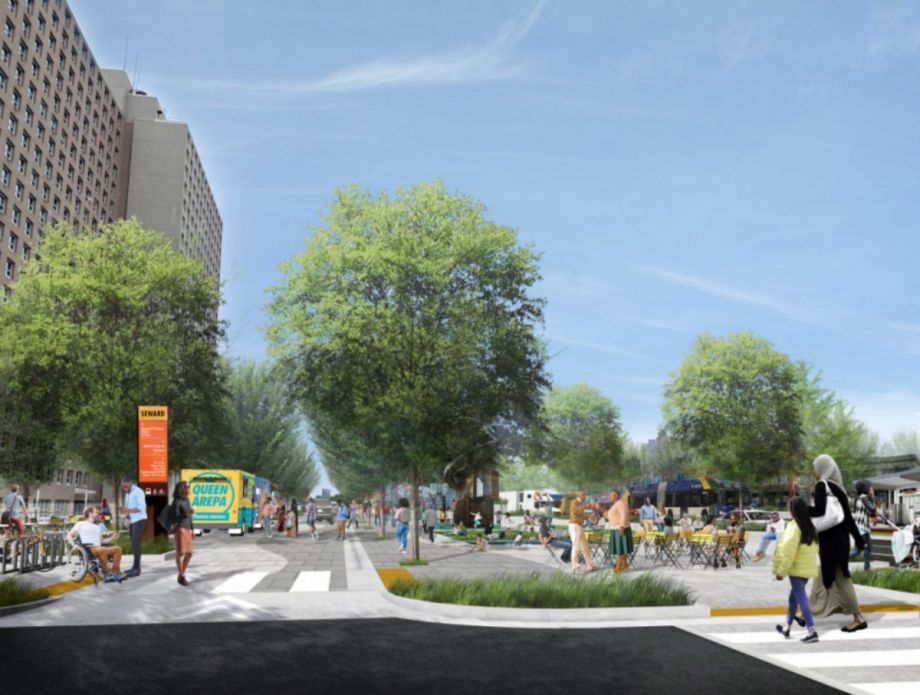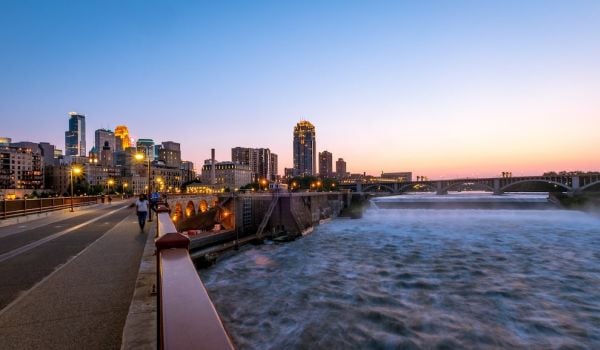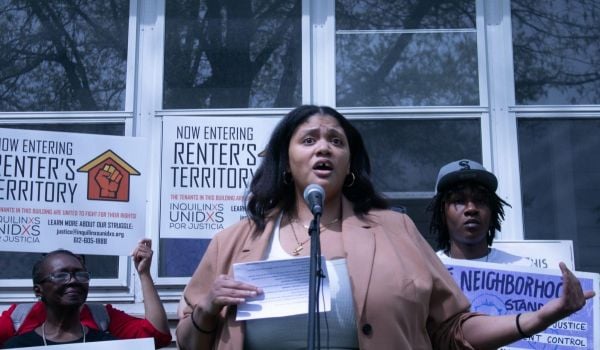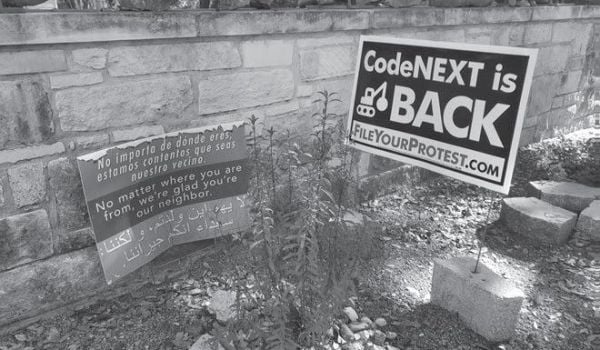Separated by the waters of the Mississippi River, roughly 164,000 vehicles traverse the seven-mile stretch of I-94 between Minneapolis and St. Paul every day. What some might see as critical infrastructure for everything from daily work commutes to sports and recreation activities, one Minneapolis group sees as an opportunity for an ambitious project designed to right historic wrongs.
Like many freeway construction projects across the country, when Interstate 94 was constructed in the 1950s and ‘60s, it decimated the predominantly Black neighborhoods it cut through. One in eight African Americans in St. Paul lost a home to the interstate’s construction and many of the businesses it displaced never reopened. In addition to disrupting wealth building in communities of color through generations, I-94 has saddled its surrounding communities with health issues like asthma from its dust, exhaust and general pollution.
These injustices are the driving force behind the vision of Our Streets Minneapolis to replace the stretch of interstate between Minneapolis and St. Paul with a multi-modal boulevard that puts pedestrians, cyclists, public transportation and community wealth building first.
A nonprofit focused on advancing biking, walking, and rolling options across the city, Our Streets Minneapolis unveiled a press release detailing their vision for the Twin Cities Boulevard last month. It was a calculated move to get ahead of the planned release of rebuilding options from the Minnesota Department of Transportation (MnDOT) this summer under the department’s Rethinking I-94 project that’s been underway since 2016.
Rather than rely on a department that has failed to meet its diversity goals since at least 2015 to do right by the communities of color, Our Streets Minneapolis took a community-developed approach.
“When looking at things like the environmental documents [related to the Rethinking I-94 project], it’s clear that MnDOT isn’t interested in truly rethinking the corridor. It’s more of a greenwashed freeway reconstruction project,” says Alex Burns, the transportation policy coordinator at Our Streets. “There was a need to expand community imagination about what could be possible and to get ahead of [MnDOT’s] planning process so that we’re not reacting to something bad that’s been finalized, but bringing the community in to build a vision proactively.”
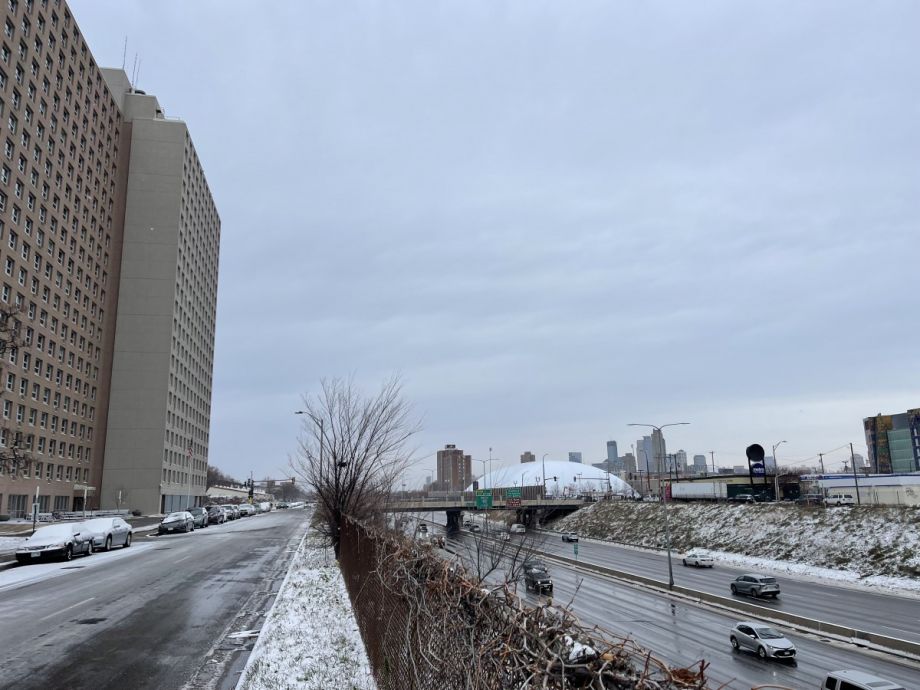
The grey view this winter along S 9th Street in the Seward neighborhood of Minneapolis (Photo courtesy of Our Streets Minneapolis)
Bruns and his colleagues began tracking the Rethinking I-94 project about two years ago. They began knocking on doors in the communities that surround the interstate, met with community organizations and communicated through social media.
They realized that the best next step would be to come up with a plan detailed enough to give people a clear sense of what’s possible but also flexible to incorporate ideas from the community.
“When we talk to folks about transportation, their main concerns are associated with the possibility of displacement and further gentrification,” says José Antonio Zayas Cabán, the advocacy director at Our Streets Minneapolis. That’s why the Twin Cities Boulevard project proposes a community land trust to return old freeway land to the communities that have suffered the most harms from it, in addition to a transportation vision that focuses on elements like protected bike “highways,” a reconnected street grid and wide, tree-shaded sidewalks.
“We believe that public land should serve the public good,” Zayas Cabán says. Unlike projects such as Reconnect Rondo that advocate for a land bridge as a solution, the Twin Cities Boulevard plan sees a land trust as essential for wealth building in the form of anything the community deems necessary, from rent control and homeownership opportunities to affordable options for small local businesses to operate.
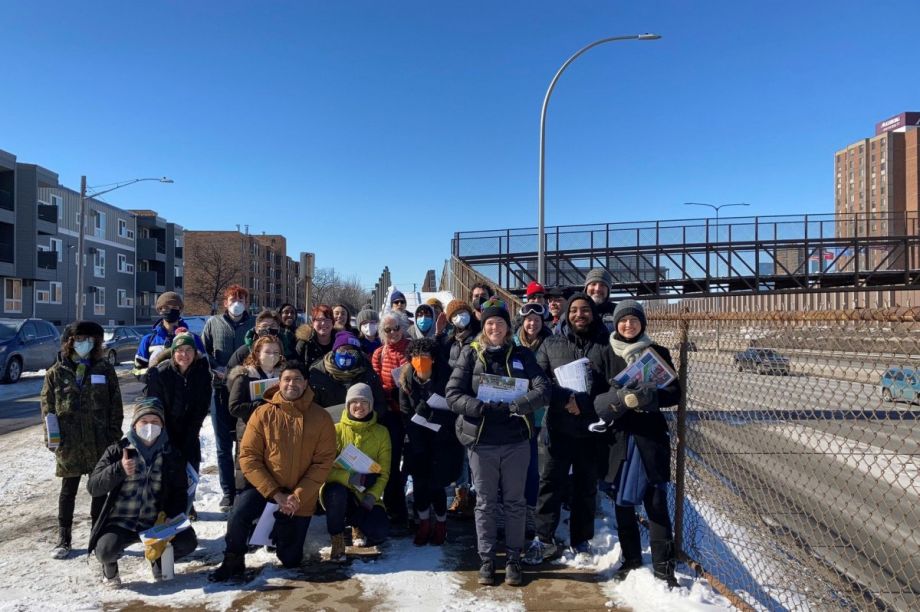
Our Streets Minneapolis at the canvass launch on February 26 in the Seward and Cedar Riverside neighborhoods. (Photo courtesy of Our Streets Minneapolis)
“Existing organizations in both Minneapolis and St. Paul work on public land trusts,” Burns explains. “For example, in Minneapolis, there’s the City of Lakes Commercial Land Trust that we feel is a great model. They keep affordable community space in a public land trust to create opportunities for small business owners.”
However, there’s still a long way to go. Steven Bourassa, chair of the department of urban and regional planning at Florida Atlantic University, studied the use of a community land trust in highway mitigation efforts in Kentucky. While he considers the Twin Cities project a unique and promising approach, he also points out that it could face some hurdles.
“It might not appeal to a lot of people. In my paper, the community in Lexington was African American and they weren’t too keen on the idea. It felt like 40 acres and a mule. They still remember that after the Civil War, freed slaves were promised 40 acres and a mule, but they never got it,” Bourassa says.
He explains that buying a home through a land trust often involves owning the home structure while essentially renting the land for a nominal fee from the trust. “These people felt like owning land is really important and that owning a house without the land feels like a second-class form of homeownership.”
In the interest of serving the surrounding communities, addressing their concerns and working to get their needs met, the Twin Cities Boulevard vision is anything but set in stone.
“Our work has been about capturing the community’s imagination, showing them what’s possible, sharing our expertise, and giving them something that they can engage with that expands their imagination,” Zayas Cabán says. “They don’t have to have a freeway in their community. There’s a whole world of possibilities for this project.”

Cinnamon Janzer is a freelance journalist based in Minneapolis. Her work has appeared in National Geographic, U.S. News & World Report, Rewire.news, and more. She holds an MA in Social Design, with a specialization in intervention design, from the Maryland Institute College of Art and a BA in Cultural Anthropology and Fine Art from the University of Minnesota, Twin Cities.
Follow Cinnamon .(JavaScript must be enabled to view this email address)

